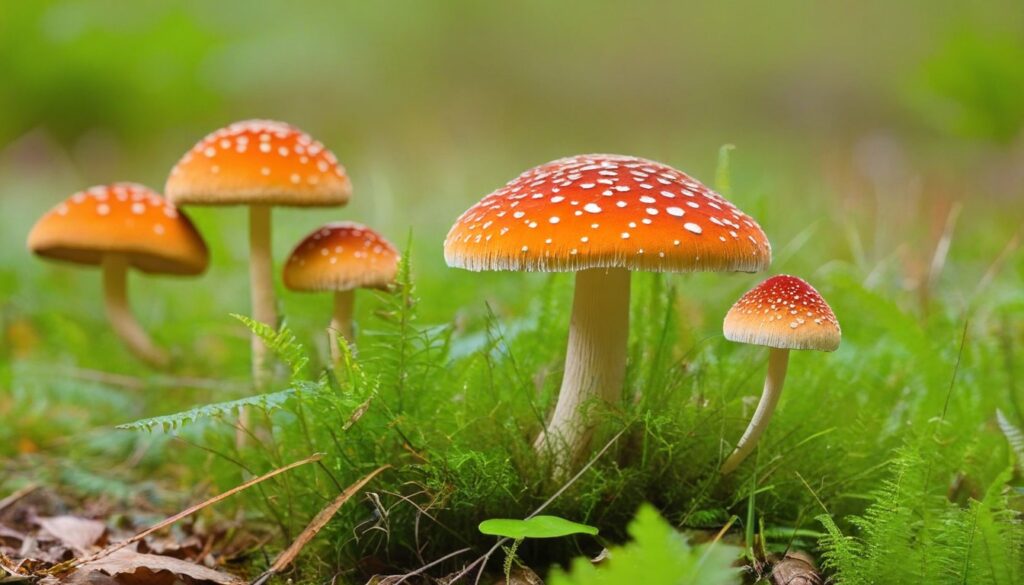Foraging for mushrooms in the vast wilderness of Illinois can be a thrilling experience. However, not all mushrooms are safe for consumption. Some can be toxic and pose a significant risk to your health. So, how do you identify poisonous mushrooms in Illinois and avoid potential harm?
Our comprehensive guide covers the essential information you need to be able to confidently distinguish between edible and poisonous mushrooms in Illinois. We will explore the common poisonous mushroom species found in Illinois, their distinguishing features, and the resources available to aid in identification.
Key Takeaways
- Foraging for mushrooms in Illinois can be dangerous if you’re unable to identify poisonous mushrooms.
- Consuming toxic mushrooms can lead to severe illness or even be fatal.
- Identifying the distinguishing features of poisonous mushrooms can significantly assist in avoiding potential dangers.
- Always seek expert advice if uncertain about the identification of a mushroom you have found.
- Safe mushroom foraging practices are crucial for minimizing the risk of mushroom poisoning.
Importance of Identifying Poisonous Mushrooms
When it comes to mushroom foraging, one of the essential skills to master is identifying poisonous mushrooms. The consequences of consuming toxic mushrooms can be severe, and in some cases, fatal. Therefore, understanding the importance of identifying poisonous mushrooms during your outdoor expeditions is critical.
The distinguishing features of poisonous mushrooms vary and can be challenging to memorize; however, it’s essential to learn them. Being knowledgeable about the visual clues to look for can protect you and your loved ones from danger.
By staying informed and vigilant, you can avoid tragedy and focus on the joys of mushroom foraging. Remember, the key to a safe and enjoyable experience is proper identification and cautious behavior.
Common Poisonous Mushrooms in Illinois
When exploring the natural beauty of Illinois, it’s essential to know which mushrooms to avoid. Some of the most common poisonous mushrooms found in Illinois include:
|
Mushroom Name |
Distinguishing Features |
|---|---|
|
Death Cap (Amanita phalloides) |
Has a greenish-brown cap, white gills and ring, and a bulbous base. Often found near oak trees. |
|
Destroying Angel (Amanita bisporigera) |
Has a white waxy cap, white gills and ring, and a bulbous base. Often found near hardwood trees. |
|
False Morel (Gyromitra esculenta) |
Has a wrinkled brain-shaped cap, and the stem is attached at the top of the cap and is often hollow. |
|
Pale-Stalked VA Cort (Cortinarius orellanus) |
Has a reddish-brown cap, yellow gills, and a pale stem. Often found in grassy areas and coniferous forests. |
It’s crucial to avoid consuming any mushroom unless you’re 100% certain of its identity and edibility. If you’re unsure about a mushroom species, it’s best to err on the side of caution and leave it be. Remember, it’s better to be safe than sorry when it comes to mushroom foraging in Illinois.
Distinguishing Features of Poisonous Mushrooms
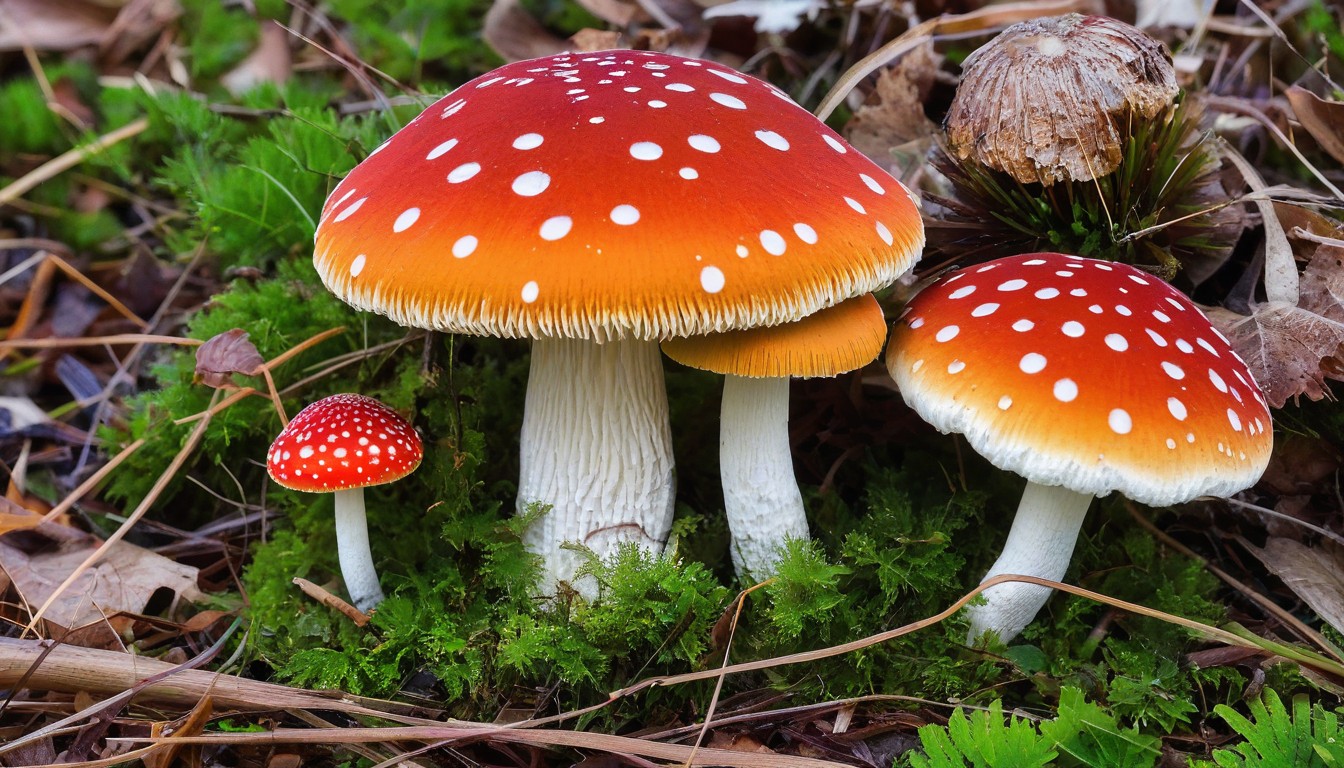
Identifying poisonous mushrooms can be a challenging and potentially life-saving task. To differentiate between edible and toxic varieties, a keen eye for specific distinguishing features is crucial.
|
Characteristic |
Poisonous |
Edible |
|---|---|---|
|
Color |
Bright red, yellow, or orange |
Earth tones like brown or grey |
|
Shape |
Conical or bell-shaped |
Convex or flat |
|
Gills |
Dark, chocolate brown or black |
Light, soft-colored |
|
Spore Color |
Bright colors like red, purple, or black |
Neutral shades of brown or yellow |
When examining potential mushrooms, carefully inspect each of these characteristics to determine if they match those of a known poisonous mushroom such as the Amanita phalloides or “death cap.
Additionally, be aware that distinguishing features for poisonous mushrooms may vary by species. Therefore, it is essential to consult an expert or utilize field guides when unsure of a mushroom’s identification.
Mushroom Field Guide Resources
When it comes to identifying mushrooms in Illinois, mushroom field guides are invaluable resources. They provide detailed descriptions and photographs that make it easier to differentiate between various species. Below are some trustworthy mushroom field guide resources specific to Illinois:
|
Field Guide |
Author |
Description |
|---|---|---|
|
Mushrooms of the Midwest |
Michael Kuo and Andrew S. Methven |
This comprehensive guide covers over 1,000 mushroom species found in the Midwest. It includes detailed photographs and easy-to-understand descriptions. |
|
Mushrooms of Northeastern North America |
Timothy J. Baroni |
Suitable not only for Illinois but also for the Northeast area, this guide presents more than 700 species, with color photographs and clear descriptions. |
|
Edible Mushrooms and Poisonous Toadstools of the Northeast |
Merrill O. Swanson |
Written by a retired plant pathologist and mushroom enthusiast, this guide showcases over 90 species of edible and poisonous mushrooms, with helpful identification tips and photographs. |
By utilizing these mushroom field guide resources, you can easily and accurately identify various mushroom species in Illinois. Remember to always cross-check your observations with multiple sources to ensure accuracy and safety.
Seeking Expert Advice
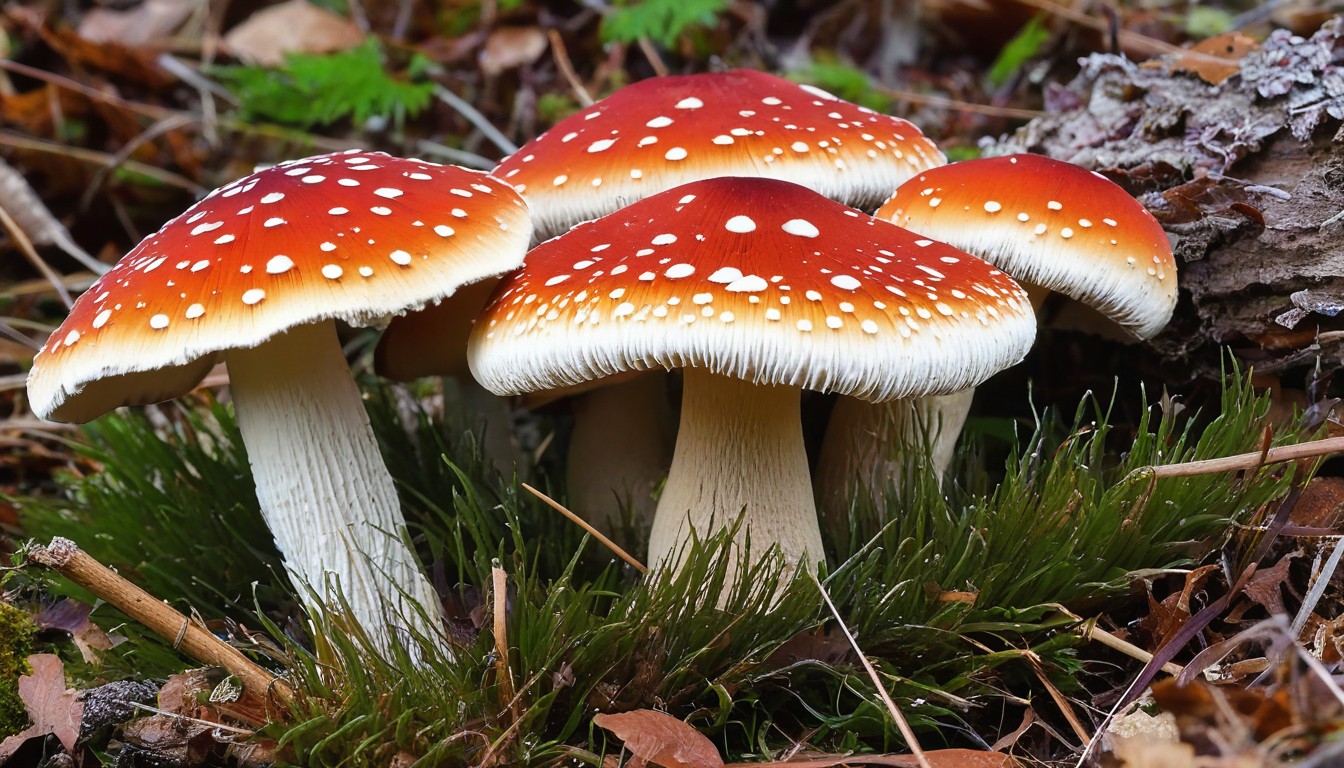
When it comes to mushroom identification, seeking expert advice is always the best course of action. Local mycological societies or experienced foragers can provide accurate and trustworthy guidance. Consulting with experts can prevent dangerous mistakes, making sure that you’re staying safe on your outdoor adventures.
Potential Lookalike Mushrooms
While foraging for mushrooms in Illinois, it’s crucial to distinguish between similar-looking species to prevent accidental ingestion of toxic mushrooms. Here are some common lookalike mushrooms in Illinois and the key differences that can help you avoid potential risks:
|
Edible Mushroom |
Poisonous Lookalike |
Distinguishing Features |
|---|---|---|
|
Morels (Morchella spp.) |
False Morels (Gyromitra spp.) |
True morels have a honeycomb-like cap while false morels have a wrinkled, brain-like cap. True morels are also hollow inside, while false morels have a cotton-like filling. |
|
Chanterelles (Cantharellus spp.) |
Jack-O’-Lantern (Omphalotus illudens) |
Chanterelles have a smooth, vase-shaped cap while Jack-O’-Lanterns have a wavy cap. Jack-O’-Lanterns also have true gills under the cap, while chanterelles have ridges. |
|
Honey Mushrooms (Armillaria spp.) |
Sulfur Shelf (Laetiporus sulphureus) |
Honey mushrooms have a smooth cap, while sulfur shelf has a bright yellow, orange, or salmon-color shelf-like structure. Sulfur shelf’s underside is covered with tiny pores while honey mushrooms have gills. |
Remember that this is just a small sample of lookalike mushrooms. When in doubt, always seek expert advice before consuming any wild mushrooms.
Avoiding Mushroom Poisoning
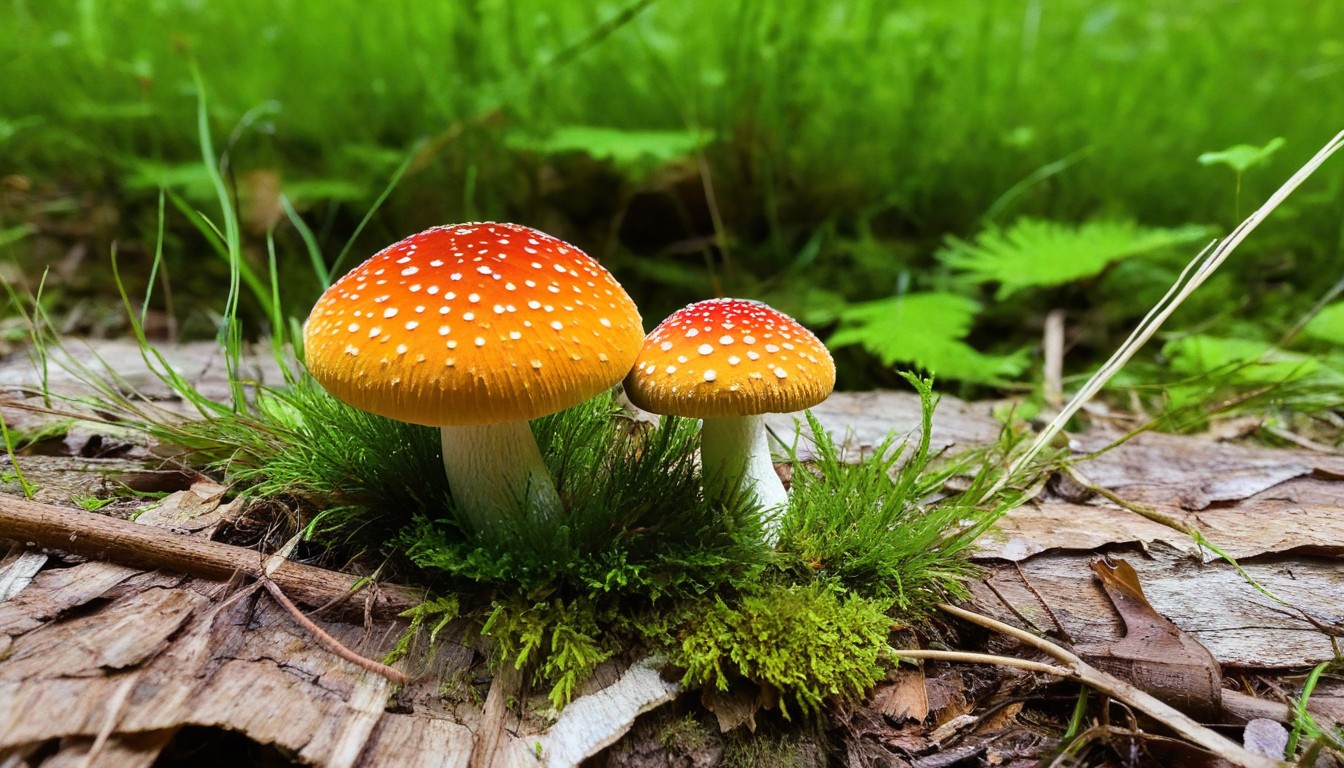
There are several safety tips you can follow to avoid the risk of mushroom poisoning in Illinois:
- Never consume mushrooms that you cannot 100% identify. It’s better to err on the side of caution, even if it means missing out on a potentially edible species.
- Avoid consuming wild mushrooms raw. Many mushrooms need to be cooked thoroughly to eliminate toxins.
- Wash mushrooms thoroughly before cooking. This helps remove any dirt or debris that can contain harmful bacteria.
- Only forage mushrooms from safe locations. Avoid collecting mushrooms from areas that may contain toxins, such as industrial sites or heavily polluted areas.
- Consult reputable field guides or experts. Before going foraging, familiarize yourself with the common poisonous mushrooms in Illinois and their distinguishing features. When in doubt, seek advice from knowledgeable experts.
By following these safety tips, you can minimize the risk of mushroom poisoning during your outdoor adventures in Illinois.
Mushroom Poisoning Symptoms
While foraging for mushrooms in Illinois, it’s essential to know the symptoms of mushroom poisoning. Even the most experienced foragers can mistakenly pick poisonous mushrooms, so it’s crucial to monitor your body for potential symptoms.
Some of the most common symptoms of mushroom poisoning include:
- Abdominal pain: severe or crampy abdominal pain that may be accompanied by vomiting and diarrhea.
- Nausea and vomiting: feeling sick to your stomach and vomiting.
- Dehydration: excessive thirst, dry mouth, and reduced urine output.
- Neurological symptoms: dizziness, confusion, seizures, hallucinations, and coma.
- Organ failure: liver failure and renal failure can occur in severe cases.
If you experience any of these symptoms after consuming mushrooms, seek medical attention immediately. Time is of the essence when it comes to mushroom poisoning since some toxic mushrooms can cause irreversible organ damage or death.
Additionally, keep in mind that symptoms may not appear immediately after ingestion. It can take several hours or days for some types of mushroom poisoning to manifest. Therefore, if you suspect that you’ve eaten a poisonous mushroom, it’s better to seek medical attention right away, even if you don’t yet have symptoms.
Note: Do not attempt to induce vomiting or consume water or liquids to help flush out your system. These measures can do more harm than good and may not improve your symptoms.
Safe Mushroom Foraging Practices
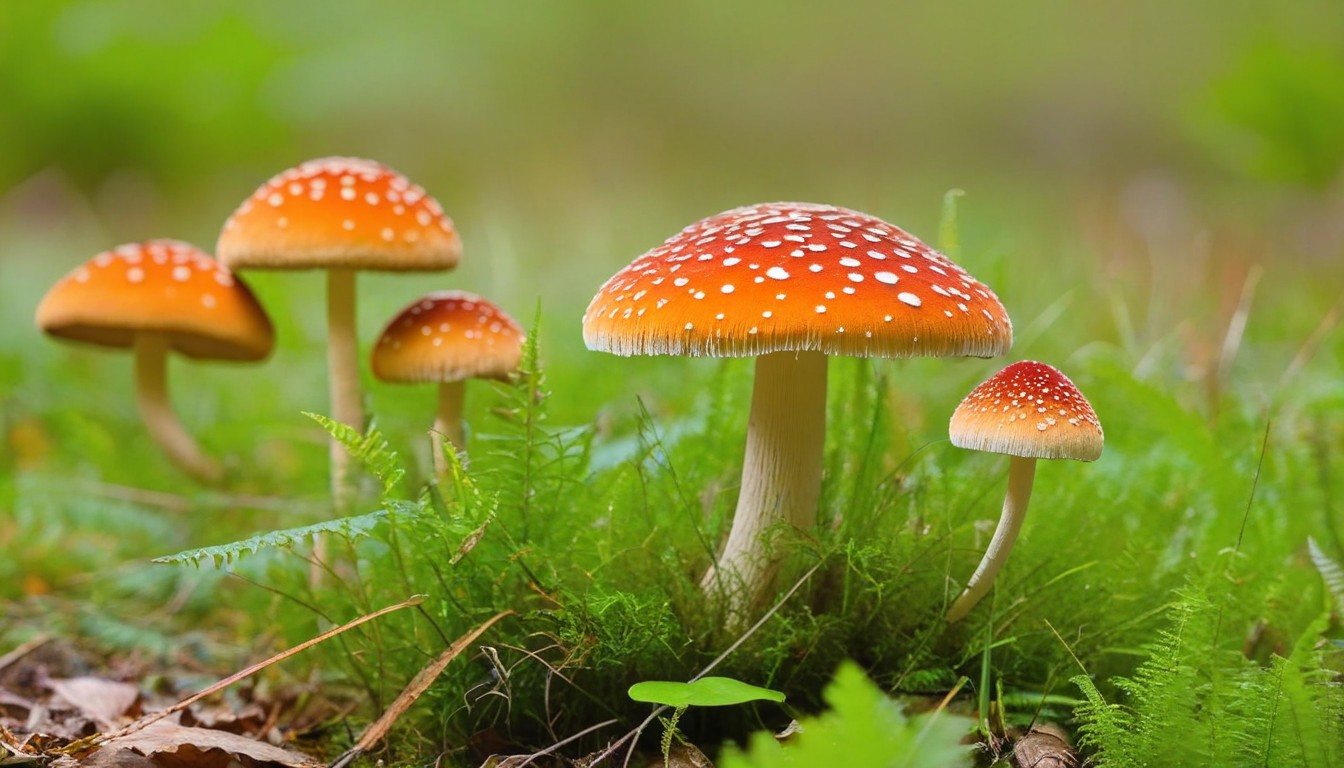
If you’re planning to go mushroom foraging in Illinois, following safe and responsible practices is essential. Here are some guidelines to ensure an enjoyable and hazard-free journey:
- Obtain proper permissions: Always obtain the necessary permissions prior to foraging on private or public land. Contact the relevant authorities to learn about any legal restrictions or permits required.
- Harvest ethically: Only harvest mushrooms that you can confidently identify as safe and edible. Avoid picking immature or uncommon species, as they play an essential role in the ecosystem. Only take what you need, leaving the rest for other mushroom enthusiasts and wildlife.
- Practice environmental conservation: Do not damage the natural habitat or disturb other wildlife when foraging. Avoid using plastic bags and opt for paper or reusable containers instead.
- Bring essential gear: Carry a mushroom-knife or scissors, a basket or bag, and a mushroom field guide to assist with identification. Wear suitable clothing and footwear, and always bring a mobile phone or other means of communication in case of emergencies.
- Consult with experts: If you’re uncertain about the identification of a mushroom, never consume it, and instead, seek advice from experienced foragers or mycological societies.
What to Do If You Encounter Trouble While Foraging
If you’re foraging for mushrooms and encounter any problems, it’s crucial to act promptly:
- Seek medical attention immediately if you experience any symptoms of mushroom poisoning, such as stomach cramps, vomiting, or diarrhea.
- Report any accidents, incidents, or suspicious behavior to the relevant authorities.
- When in doubt, don’t eat or even touch the mushroom until you can safely identify it, seek the advice of an expert, or dispose of it.
Conclusion
In conclusion, foraging for mushrooms in Illinois can be a thrilling and fulfilling experience. However, it’s important to understand the risks involved and take the necessary precautions to avoid mushroom poisoning. By familiarizing yourself with the distinguishing features of poisonous mushrooms, using mushroom field guides, seeking expert advice, and following safe foraging practices, you can confidently explore the natural world around you.
Remember, never consume a mushroom that you are uncertain about, no matter how hungry you may be. It’s better to err on the side of caution to avoid any potential risks to your health. If you experience any symptoms of mushroom poisoning, seek medical attention immediately.
With proper preparation, knowledge, and responsible practices, you can enjoy the excitement of mushroom foraging while prioritizing your safety and the preservation of the environment. Happy hunting!
FAQ
How can I identify poisonous mushrooms in Illinois?
To identify poisonous mushrooms in Illinois, it’s important to familiarize yourself with their distinguishing features, such as color, shape, gills, and spore color. You can also consult mushroom field guide resources and seek advice from experts for accurate identification.
Why is it important to be able to identify poisonous mushrooms?
Identifying poisonous mushrooms is crucial to avoid consuming toxic species that can cause severe illness or even be fatal. By understanding the distinguishing features of poisonous mushrooms, you can protect yourself and your loved ones during outdoor activities.
What are some common poisonous mushrooms found in Illinois?
Some common poisonous mushrooms that can be found in Illinois include the Death Cap (Amanita phalloides), Destroying Angels (Amanita species), and False Morels (Gyromitra species). It’s important to be aware of these species to avoid potential dangers.
What are the distinguishing features of poisonous mushrooms?
Poisonous mushrooms can have distinguishing features such as vibrant colors, unusual shapes, gills that are often white or various colors, and spore colors that differ from edible mushrooms. It’s important to carefully observe these features to differentiate between edible and toxic mushrooms.
Are there any resources available to help identify mushrooms in Illinois?
Yes, there are mushroom field guide resources specifically tailored to Illinois. These guides provide detailed descriptions and images of different mushroom species, making it easier for enthusiasts to identify them accurately. Some recommended resources include “Mushrooms of the Midwest” by Michael Kuo and Andrew Methven.
What should I do if I’m uncertain about the identification of a mushroom I have found?
If you’re unsure about the identification of a mushroom, it’s best to seek advice from experts. Consult local mycological societies or experienced foragers who can provide accurate and trustworthy guidance. It’s always better to be safe and consult an expert rather than taking chances.
Can poisonous mushrooms resemble edible species?
Yes, certain poisonous mushrooms can bear a resemblance to edible species, increasing the risk of accidental ingestion. It’s important to be aware of common lookalike mushrooms in Illinois and understand the key differences to avoid potential risks.
How can I avoid mushroom poisoning?
To avoid mushroom poisoning, it’s essential to follow safety tips such as correctly identifying mushrooms, foraging only from reliable sources, and never consuming mushrooms that you are unsure about. It’s also important to cook all mushrooms thoroughly before consumption.
What are the symptoms of mushroom poisoning?
Symptoms of mushroom poisoning can vary depending on the specific toxins involved, but common symptoms include nausea, vomiting, abdominal pain, diarrhea, and in severe cases, organ failure or death. If you suspect mushroom poisoning, seek medical attention immediately.
What are some safe mushroom foraging practices in Illinois?
To ensure a safe mushroom foraging experience in Illinois, it’s important to obtain proper permissions before foraging, practice ethical harvesting by not overharvesting or damaging the environment, and follow guidelines for responsible mushroom collecting. It’s also crucial to leave any mushrooms you’re unsure about in the wild.

